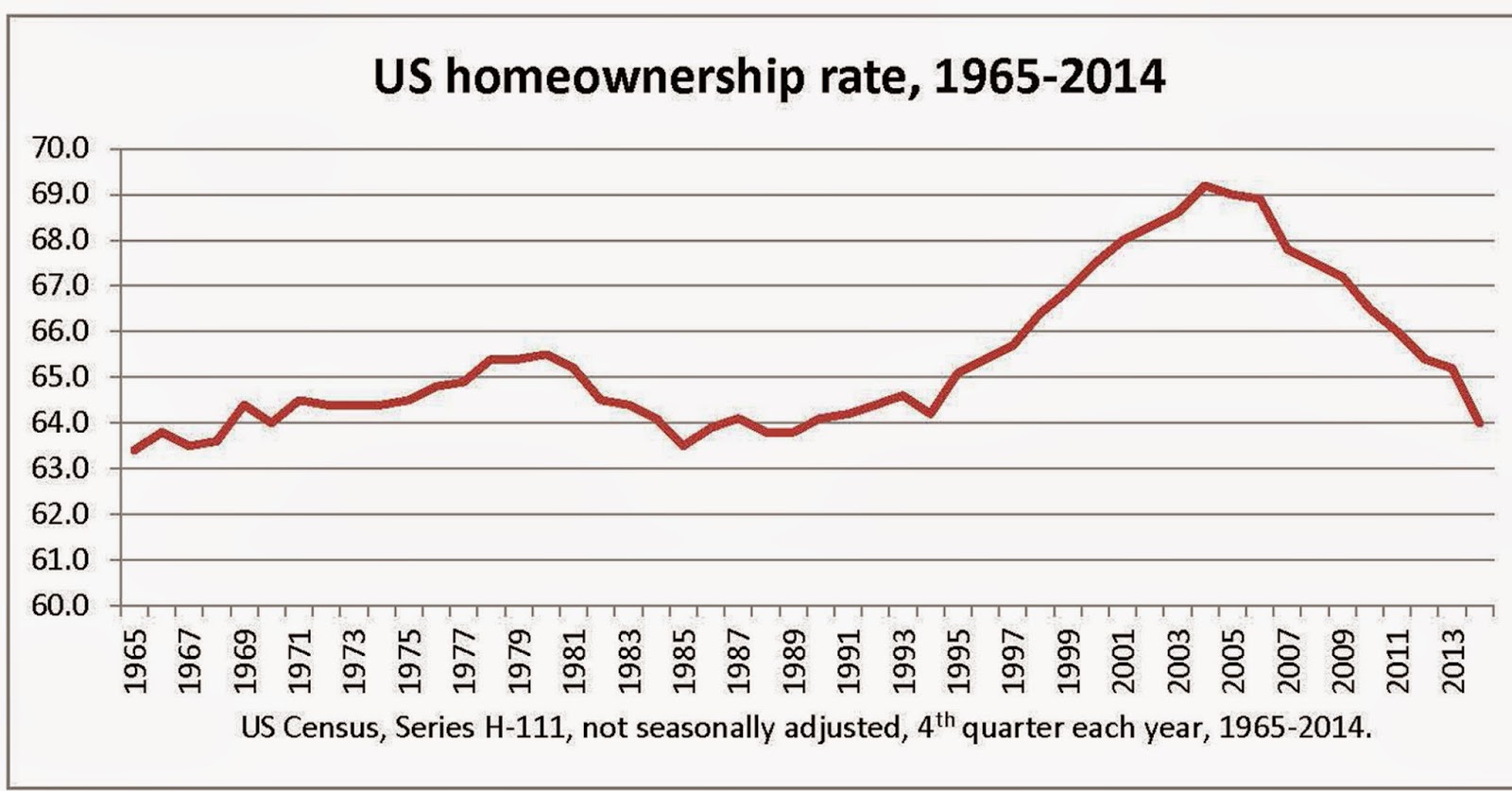The homeownership rate always garners headlines. Recent versions include the “22-year low” to clumsy attempts to connect homeownership to presidents’ policy. There are some more thoughtful takes, too, but most naturally converge on the recent boom and bust in housing. The boom and bust focus, however, obscures the basic fact that about a third of us rent homes and about two-thirds of us own homes. That’s been true as long as we’ve been counting.
For a recent talk I did at a Women in Housing and Finance conference, I put together two charts of the same data. Here’s the first one, of the homeownership rate as measured by the Census Bureau annually, in essentially the default graph that you can generate from the Commerce Department website. It illustrates the boom and bust focus:
The chart shows a big run up from 1995 to 2005, and then a dramatic fall, with no previous peak nearly as high. Looking at that immediately prompts questions about why it happened and how to prevent it from happening again.
Here are the same data, but with one change: the vertical axis goes from zero to 100 percent instead of from 60 percent to 70 percent.
Looks pretty darn stable this way. Above the line, people rent their homes. The boom and bust looks like a gentle swell. Below this line, people own their homes. Again, the data are exactly the same. All that changed is the scale.
Variations in the homeownership rate matter a lot, of course. The gentle swell above represents millions of people and many more millions of dollars. But zooming out helps to put the housing boom and bust in perspective.
Our public policy should focus far less on how high we can push the overall homeownership rate and far more on how we can make sure that everyone has safe, stable, affordable housing. We know that stability, not owning vs. renting, is what matters most for children. We know that there are ways to make homeownership stable and achievable for low-income families in growing neighborhoods. We know that rental housing can be a platform for essential supportive services, such as those being used by veterans in need. And most of all, we know that Americans are still struggling to afford stable housing, be it rented or owned. So the next time you read an exciting headline about the homeownership rate, zoom out a little bit, and put it in perspective.



